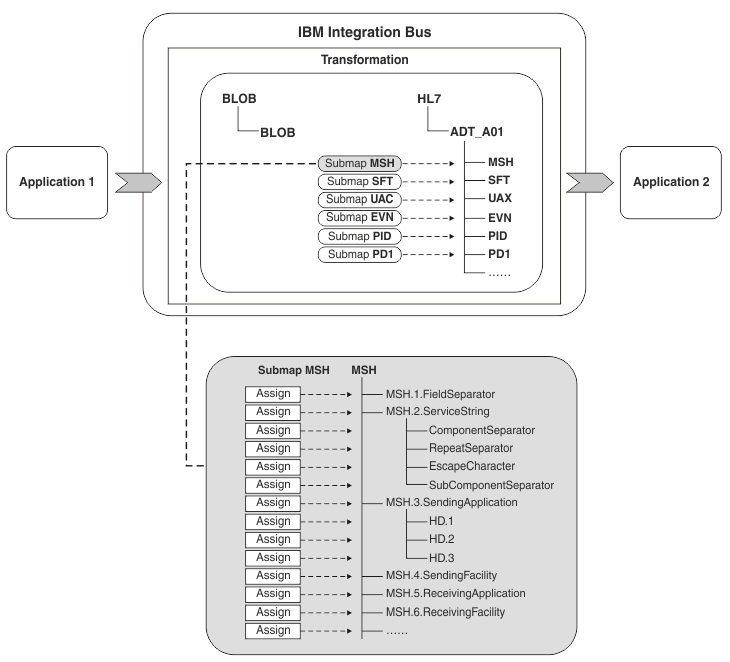The Healthcare: HL7 Transformation pattern generates graphical data maps that you can use to assemble HL7 messages.
HL7 messages typically contain many data segments. The segments themselves can also contain large numbers of individual fields. When you create a new HL7 message, you must create the HL7 message hierarchy. This hierarchy might contain hundreds, or thousands, of fields. Creating this hierarchy can be time-consuming, even when you use a graphical mapping tool. The Healthcare: HL7 Transformation pattern helps to solve this problem by generating graphical data maps that assign a default value to all of the fields in the HL7 messages that you select.

You can use the the Healthcare: HL7 Transformation pattern in the following ways:
The pattern parameters provide the following options:
When you generate an instance of the Healthcare: HL7 Transformation pattern, the HL7 message model is automatically imported into your workspace in the library HL7v27DFDLLibrary. A warning is shown if this library exists. If you choose to continue, the existing library is overwritten. If you want to customize your HL7 message model, make your changes after you have generated an instance of the pattern.
If you select the pattern parameter to create an example message flow, it contains three nodes:
A script is generated that you can run to create the queues that are used by the message flow.
If the Healthcare: HL7 Transformation pattern is used to generate transformation logic for the creation of HL7 messages that contain a choice structure, then the generated Graphical Data Maps or ESQL provide a submap or procedure call respectively. The submap or procedure call creates the first child of the choice structure. In the case of Graphical Data Maps, Task transforms are used to provide placeholders for other choice options. In the case of ESQL, commented procedure calls are used to provide placeholders for other choice options.